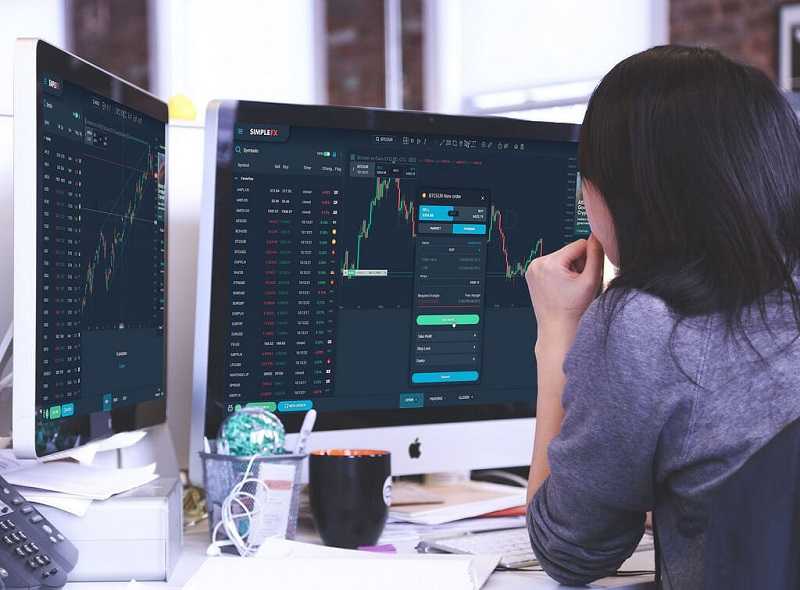
What are the main characteristics of different trading styles, how to choose the right one based on your trading personality? How to pick the trading style that suits you the most?
By Guy Avtalyon
I hope you figured out the “best” trading system for you but do you really know your trading personality? Of course, the trading system you chose is one that suits your personality, I hope. No? Where is the problem? How is it possible you made such a mistake? You tried with some quizzes on the internet, right? But is that the right way to figure out your trading personality? It’s for fun, for God’s sake! You must be serious when choosing the trading style, your money is in play.
How to choose a trading style based on your trading personality?
We have four basic styles of trading and each trader will choose the one that suits him or her best. We all have to choose between day trading, scalping, position trading, and swing trading. Which one will a trader choose depends on trading personality. In other words, our trading style depends on our personality.
If you think it is an easy task I have to tell you’re completely wrong. Your trading style must be in harmony with your personal characteristics and knowing them is just half of your way.
Are you still with me?
Okay! Let’s go further!
I suppose you’re new in this field. So, here is how to match your trading style with your trading personality. If you’re still reading this it is more likely you didn’t find the right trading style yet. I can help you.
Finding the right trading style that fits your trading personality is extremely important. Otherwise, you’ll have losses. And nothing but the stress, losing money and finally you’ll give up. That decision could be wrong because you’ll miss the chance to earn money.
How to choose the trading style that best suits your personality?
If you never harmonize your trading style to your trading personality or even worse, if you never recognize what your personality is in trading, you’ll never become a profitable trader.
But here is a tricky part. You have to be honest about your wishes and your possibilities. Moreover, you’ll have to put them in alignment. They have to walk side by side, supporting and taking care of each other.
So, be honest when answering these questions.
– What time frame do you prefer when trading? Is it position trading, swing trading, day trading, scalping?
– How do you recognize yourself, as a fundamental or technical trader?
– What is your risk tolerance?
These are three basic questions and based on your answer you’ll figure out what is your preferred trading style. I have to repeat, you MUST be honest. The most important thing is to avoid your emotions. It really doesn’t matter what style you like more. It is all about how to match your trading personality with your trading style and you’ll have to do that without emotions.
I know it is the hardest part.
To put more pain into your life I have to tell you that you’re not choosing the style only, you’ll need to decide the type of trader you want to be.
Are you a discretionary trader and system trader?
Some of you will be able to recognize at first glance but the others will need to try both types before making any decision. Nothing is wrong with that. Always keep in mind that your hard-earned money is in play and you want to see it growing, not to lose it.
From my point of view, both types have the potential to be profitable. But it’s up to you to find the one that suits you best. My choice shouldn’t be yours necessary. Choosing the right style and the right type of trading that suits your trading personality is an individual decision. What I can do for you is to give you some hints and clues on how to do that and avoid mistakes that could lead you to great losses.
I want to share one secret with you – when choosing your trading style keep in mind that less is more. What does it mean? It is better to choose one strategy that works for you and when you master it and advance it, you can easily shift to another if it is necessary or you want changes.
So, let’s go more deeply into each trading style and see how they match your trading personality.
Position Trading
Position trading is suitable for long-term traders since it is comparable with holding an investment for a long time. In position trading, your trades may last between several weeks to several years. The length of your trade will depend on trends because the main focus is on the price movements. Position traders seek stocks with the ability to grow in the long run. They believe when the trend appears, it is going to continue.
Trading personality characteristics for a position trader
First of all, you don’t like or don’t have time to monitor the markets all the time. Further, you’re not an aggressive type of trader. You don’t prefer instant treatment and, more importantly, you have a large portfolio.
In what circumstances position trading isn’t suitable for you?
If you are an aggressive trader this isn’t for you. Also, if you’re not patient and have a small portfolio, so you would like to enlarge it. Or maybe, you want to profit instantly.
Day Trading
For day trading style you’ll need a good education and large funds. For being a day trader you’ll need a great knowledge of short-term strategies and to recognize even the smallest market’s moves. Day trading is when you enter and exit the position during one trading day. Your profit will come from small changes in the market.
Trading personality characteristics for a day trader
You’ll need a great knowledge of the market you want to trade. Also, you’ll need a large capital ready to invest. In case you’re a quick thinker and quicj=k decision-maker this strategy is suitable for you. If you think you can maintain severe discipline, this could be the right trading style for you.
In what circumstances day trading isn’t suitable for you?
This isn’t a good choice for beginners or for the traders with a lack of capital. If you’re not experienced and tend to sell your winners too early or you’re keeping your losers too long, this style isn’t for you.
Let’s go further! I hope you’re interested.
Swing Trading
In this trading style, you don’t need to continually monitor your trades. You’ll hold the position for a few days because you’ll follow the trend and it may last a few days. When it is an uptrend you’ll go long, while when it is a downside, you’ll go short. This is a perfect style for traders who have regular jobs and can’t monitor trades all the time.
Trading personality characteristics for a swing trader
If you’re patient and can wait for the best trading opportunity this is for you. This means you’re not going to panic when the trade changes direction and moves against you. In this style, you don’t need full-time devotion to the trade and you don’t need to make your trading decisions quickly.
In what circumstances day trading isn’t suitable for you?
If you feel nervous and get panicked when the markets change direction against your favor, it is better to avoid this style. Also, if you’re not able to recognize the trend. Trend following is very important in swing trading. If you can’t, just don’t swing.
Scalping
This is the quickest strategy among trading styles. You’ll take profits from tiny price changes, but they will frequently occur. If you want to become a scalper you’ll need to make several trades within a few seconds. For this style you;ll need a great and accurate exit strategy. You’ll have small gains but frequently. These small gains compounded, have the potential to generate a large profit. But be careful, this style could be a double-edged sword. Just one big loss could delete all your small gains.
Trading personality characteristics for scalpers
If you’re a quick decision-maker, and able to act without hesitation, this is your best pick. Also, you’ll have to be fully focused on your trades while performing them. This style requires a lot of time to devote to trades since you’ll need to act quickly. Moreover, you’ll have to know how to handle stress while trading.
In what circumstances day trading isn’t suitable for you?
If you’re not focused enough, feel stress while have to make quick decisions, or hesitate to trade
How to pick the right style based on your trading personality
I have to be honest, there is no magic or easy answer. It depends on your individual characteristics and conditions. Also, you have to take into account some other variables.
The most important part is to be realistic and honest when evaluating your trading personality. You MUST know what trading style is easiest for you to handle, which style will best fit your abilities. When you choose one it doesn’t necessarily mean you’ll have to stick with it. You can change it. Choosing a suitable trading style is a process. It’s not set in stone. Hence, it’s changeable. But don’t change it fast and try numerous styles in a short time. Evaluate and estimate before choosing any. And stick to it even if you have losses at first. Try to find where you make mistakes and fix them, make some improvements. The trading journal will be a great help to do that. If you made the right decision you’ll take profit. Your loyalty will be rewarded.



 How to find the best Forex strategies and win the market? Here are some suggestions.
How to find the best Forex strategies and win the market? Here are some suggestions.
 Position trades requires just a half of hour work per day, but profits can be great.
Position trades requires just a half of hour work per day, but profits can be great.
 What are the benefits and disadvantages of this trading style? All explained.
What are the benefits and disadvantages of this trading style? All explained.
